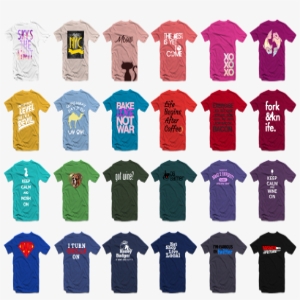Embroidery vs DTG Printing A Comprehensive Guide to Choosing the Perfect Customization MethodPosted by Alfred on November 28th, 2023  Embroidery and Direct-to-Garment (DTG) printing stand as two distinct yet popular methods for customizing apparel and fabrics. In this comprehensive guide, we will delve into the intricacies of these techniques, comparing their advantages, limitations, and the factors that should influence your choice. IntroductionEmbroidery and DTG printing are two creative avenues for personalizing clothing and accessories. As the demand for unique, custom designs continues to rise, individuals and businesses alike are faced with the crucial decision of choosing between these two methods. The choice not only affects the aesthetics but also influences factors like cost, efficiency, and environmental impact. Embroidery A Timeless CraftEmbroidery, with its roots deep in tradition, is an art form that involves decorating fabric with needle and thread. The tactile and textured nature of embroidered designs adds a timeless charm to various products, from hats to jackets. One of the key advantages of embroidery lies in its durability and classic appeal. However, it may not be the ideal choice for intricate or highly detailed designs. The Modern ApproachDTG printing, on the other hand, represents a contemporary and technologically advanced method. This process involves printing designs directly onto fabric using specialized inkjet technology. DTG printing allows for intricate detailing and vibrant colors, making it a preferred choice for those seeking high-resolution images on their garments. This modern approach, though, may have limitations when it comes to certain fabric types. Comparing Cost and EfficiencyCost considerations play a pivotal role in choosing between embroidery and DTG printing. While embroidery utah may incur higher upfront costs due to the intricate process and materials involved, DTG printing offers cost-effectiveness for larger volumes. Efficiency is another factor to consider, with DTG printing being notably faster than the intricate stitching required for embroidery. Design ComplexityEmbroidery, with its reliance on needlework, has limitations when it comes to intricate designs or small text. DTG printing, on the other hand, excels in capturing fine details and is better suited for complex graphics. Understanding the nature of your design is crucial in determining which method aligns with your creative vision. Durability and LongevityEmbroidered designs are renowned for their longevity and resistance to fading. The stitching provides a robust structure, ensuring that the design withstands regular wear and washing. DTG printing, while producing vibrant colors, may experience some fading over time. Consider the intended usage and care routine of the customized product when evaluating durability. Customization FlexibilityThe level of customization flexibility varies between embroidery and DTG printing. Embroidery is limited in reproducing intricate designs and gradients, while DTG printing offers a broader spectrum of customization options. If your design includes gradients, small text, or intricate patterns, DTG printing may be the more flexible choice. Environmental ImpactAs sustainability gains prominence, considering the environmental impact of customization methods is essential. Embroidery, being a traditional craft, generally has a lower environmental footprint. However, advancements in eco-friendly inks and practices make DTG printing a viable option for those seeking a greener approach to customization. Personalization TrendsKeeping abreast of current personalization trends is crucial for individuals and businesses aiming to stay relevant. Embroidery maintains its allure in certain markets, evoking a sense of craftsmanship. However, DTG printing caters to contemporary trends, offering a canvas for intricate and vibrant designs that align with modern aesthetics. Choosing the Right Method for Your NeedsThe decision between embroidery and DTG printing ultimately boils down to individual requirements. Assessing factors like budget, design complexity, and desired customization flexibility is key. Understanding the nuances of each method ensures that your chosen approach aligns seamlessly with your vision and purpose. Real-life Success StoriesExamining real-life success stories can provide valuable insights into the practical applications of embroidery and DTG printing. Businesses that thrive with embroidered products showcase the enduring appeal of this traditional method. Meanwhile, case studies of ventures utilizing DTG printing highlight its adaptability and effectiveness in the contemporary market. Common MisconceptionsDispelling myths and clarifying misconceptions is essential for making informed decisions. Embroidery is often associated with limitations in design complexity, while DTG printing may face misconceptions regarding durability. Understanding the realities of each method ensures that expectations align with the capabilities of the chosen customization technique. Future Innovations in CustomizationThe world of customization and new custom appeal is ever-evolving, with both embroidery and DTG printing witnessing innovations. Embroidery sees advancements in digitization and automated stitching, enhancing efficiency. Simultaneously, DTG printing continues to refine its technology, promising even higher resolution and faster printing speeds. Staying informed about these innovations can influence your long-term customization strategy. ConclusionIn conclusion, the choice between embroidery and DTG printing hinges on a myriad of factors. Each method brings unique advantages to the table, catering to different preferences and purposes. Whether you are drawn to the timeless craftsmanship of embroidery or the modern precision of DTG printing, ensuring alignment with your goals and requirements is paramount for a successful customization. Like it? Share it!More by this author |


